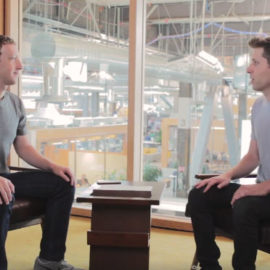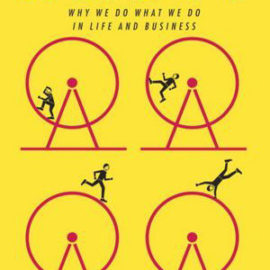Want to learn the ideas in Brotopia better than ever? Read the world’s #1 book summary of Brotopia by Emily Chang here.
Read a brief 1-Page Summary or watch video summaries curated by our expert team. Note: this book guide is not affiliated with or endorsed by the publisher or author, and we always encourage you to purchase and read the full book.
Video Summaries of Brotopia
We’ve scoured the Internet for the very best videos on Brotopia, from high-quality videos summaries to interviews or commentary by Emily Chang.
1-Page Summary of Brotopia
Overview
For the past 30 years, Silicon Valley has been a leader in business. It’s considered to be one of the best places to work because of its progressive work environments.
Tech companies are known to be progressive, but is that really true? Tech companies have more male employees than female ones. There’s a new norm in the industry. It seems like these companies were created for men and feed into the “bro” culture. This isn’t great because workplaces that cater to men don’t do well in business or society as a whole. In this article you’ll find out why tech companies hire antisocial men, how many women had computer science degrees back then compared to now, and how much gets invested in male-led startups versus female-led ones.
Big Idea #1: Computer programmers used to be women until a report in the 1960s changed everything.
When you think of a computer programmer, what do you picture? The typical image is probably a nerdy man who’s bad with people but good at math. However, that stereotype is far from reality.
During the first part of the 20th century, computers were considered clerical work and thus deemed “women’s work.”
It shouldn’t be any surprise to learn that women programmed the first computer for the US Army during World War II. Or that rear admiral Grace Hopper, who had a PhD in mathematics, was involved with programming Mark I at Harvard University.
Another thing that many people don’t know is that astronaut John Glenn’s successful orbit of the earth in 1962 was made possible by three female NASA mathematicians. The lack of recognition for their contribution inspired the 2016 film Hidden Figures. Then, in 1967, an article titled “The Computer Girls” appeared in Cosmopolitan magazine. It contained an interview with Hopper, who compared programming to organizing a dinner party. She said that women made good programmers because of their patience and attention to detail. In the 1960s, though, there came a report claiming men were better suited to programming than women were because they didn’t like people as much as women did—a claim supported by Cannon and Perry after interviewing 1,378 programmers (186 of whom were female). According to them, one key trait was antisocial behavior and introversion; both are more commonly found among males than females due to male tendencies toward anti-social personality disorder.
After the release of a report, companies were persuaded to hire antisocial men for programming jobs. Their dominance in that field has led people to believe that most programmers should be men.
Big Idea #2: After the 1960s, women programmers were slowly replaced by men.
The stereotype of the male nerd was firmly established by the 1980s, when computers were being commercialized. Before then, however, men began to take over technology industries and became more prevalent in them.
In the late 1960’s, two things happened: technology started to gain traction and women were replaced by men.
Around this time, the technology industry was growing. Computers were becoming more recognized as intellectual jobs that required brain power rather than physical labor. However, at the time, men were considered to be better with computers due to their superior intellects.
As we will see, boys were more likely to have used computers. As computer science courses became popular in colleges, males were more experienced with the admissions tests than females. This is still true today for college degrees in computing sciences: 40% of them are held by males compared to 18% held by females.
Computers were originally perceived as a boy’s toy.






